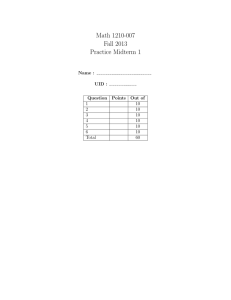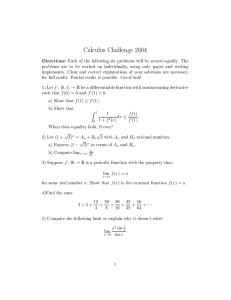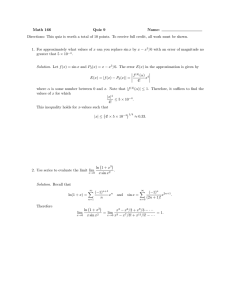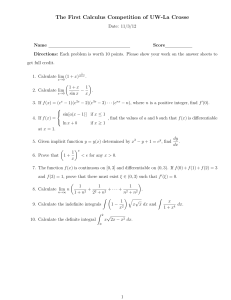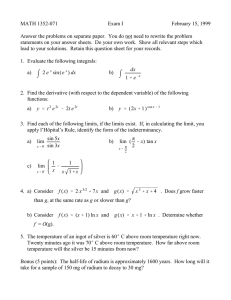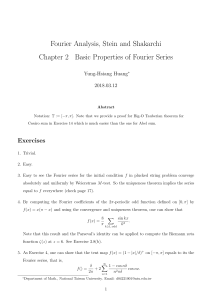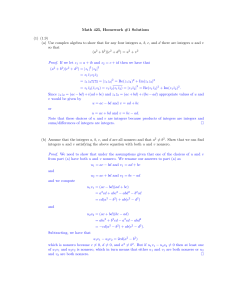1) lim sin ) = 1. Given ϵ > 0, there exists δ > 0 such that -δ < x
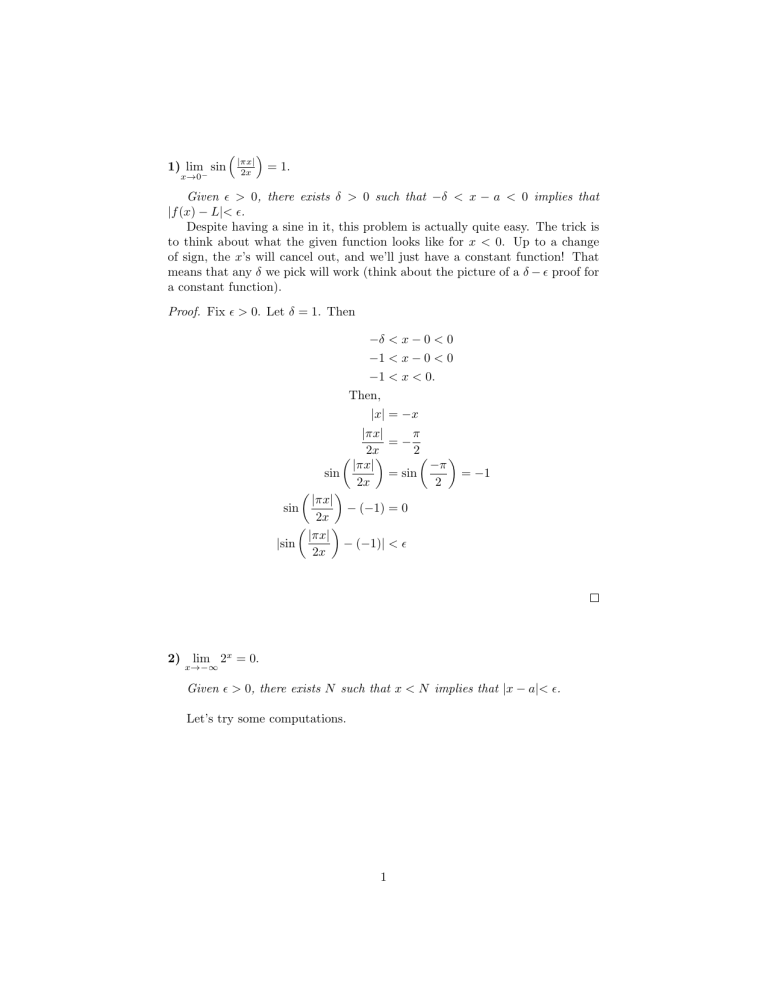
1) lim x → 0
− sin
| πx |
2 x
= 1.
Given > 0 , there exists δ > 0 such that − δ < x − a < 0 implies that
| f ( x ) − L | < .
Despite having a sine in it, this problem is actually quite easy. The trick is to think about what the given function looks like for x < 0. Up to a change of sign, the x ’s will cancel out, and we’ll just have a constant function! That means that any δ we pick will work (think about the picture of a δ − proof for a constant function).
Proof.
Fix > 0. Let δ = 1. Then
| sin sin
| πx |
2 x
| πx |
2 x sin
− δ < x − 0 < 0
− 1 < x − 0 < 0
− 1 < x < 0 .
Then,
| x | = − x
| πx |
2
| πx | x
= −
π
2
= sin
2 x
−
2
π
= − 1
−
− (
( −
−
1) = 0
1) | <
2) lim x →−∞
2 x = 0.
Given > 0 , there exists N such that x < N implies that | x − a | < .
Let’s try some computations.
1
| 2 x − 0 | <
2 x
< ln(2 x
) < ln( ) x ln(2) < ln( ) x ln(2) < ln( ) ln( ) x < ln(2)
It looks like N = ln( ) ln(2) will do the trick. Let’s try.
Proof.
Fix M > 0. Let N = ln( ) ln(2)
. Then x < N ln( ) x < ln(2) x ln(2) < ln( ) ln(2 x
) < ln( )
2 x
<
| 2 x − 0 | <
Where the second to last step comes from exponentiating.
You might be tempted to say “But Chris! We’re dealing with x going towards negative infinity, and your value of N looks positive!” The answer is that my value of N can be negative, because natural log of small numbers returns arbitrarily small values.
3) lim x →−∞ x
4
+1 x 2
= ∞ .
Given M > 0 , there exists N such that x < N implies that f ( x ) > M .
I’d like to point out that defined. So let’s work with x 2 x
4
+1 x 2
+
1 x 2
= x 2 +
1 x 2
, instead.
for all x on which the function is
2
Computation time. Remember that we are working backwards .
x
2
+
1
> M x 2 x
2
> M
√ x > x < −
M or
√
M
We need x to be less than N , so let’s say N = −
√
M .
Proof.
Given M greater than 0, let N = −
√
M . Then x < N x < −
√
M x
2
> M x
2
+
1 x 2
> M
3

